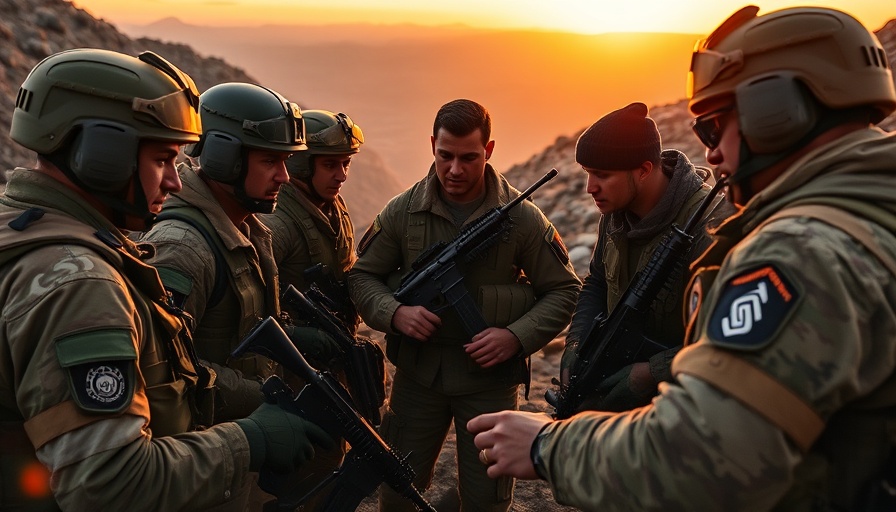
Lessons from the Battlefield: Leadership Beyond the Boardroom
In today's fast-paced corporate world, effective leadership is not just about results; it’s about owning the consequences of decisions. This vital lesson, drawn from the experiences of Lionel Benizri, a former commando in the Israeli Defense Forces and now CEO of Yood.co, underscores the complexity of leadership gleaned from some of the most dangerous terrains on Earth. Benizri’s insights challenge conventional business thinking, introducing powerful methodologies that not only resonate with corporate leaders but are critical in a rapidly changing world.
Understanding Uncertainty: The Nature of Leadership
Benizri's first lesson emphasizes the reality of chaos: "Not every situation can be anticipated. Determine what you can control." Each day in the boardroom mirrors the unpredictability of the battlefield. Businesses, much like armies, face emerging threats and unforeseen challenges that require instant recalibration. Just as Benizri faced erratic scenarios in Gaza, leaders today must adapt to sudden market shifts, evolving consumer behavior, and disruptive innovations.
The Art of Decision-Making: Ownership of Consequences
What sets exceptional leaders apart is their courage to own the outcomes of their decisions, regardless of the environment they are in. Think back to a time when a quick decision could determine success or failure. Benizri's approach reveals that leaders must take responsibility for their choices and the subsequent effects on their teams and organizations. In his case, navigating through life-threatening situations instilled a profound understanding of accountability.
Building Resilience: Lessons from Combat
Resilience is a defining characteristic of both soldiers and leaders. The capacity to bounce back from failures or setbacks is crucial. Leaders are often faced with situations where they must turn adversity into opportunity. Benizri's experiences highlight that true leadership is forged in the crucibles of hardship and pressure, akin to athletes in high-stakes games who thrive under pressure.
Cultivating a Culture of Adaptability
In combat, plans are frequently rewritten in real time based on emergent threats. Similarly, in the corporate arena, adaptability is key. A rigid corporate structure stifles growth and innovation. Benizri underscores the need for leaders to cultivate an environment where flexibility is encouraged, allowing teams to pivot swiftly when needed.
Synergy in Leadership: Team Dynamics
Just as no soldier is an island, no leader can succeed without a strong team. Building relationships based on trust and mutual respect is essential. Benizri's collaborative approach mirrors that of successful sports teams, where each player's unique strengths contribute to collective victories. Leaders must remember that empowering team members, akin to athletes, often leads to greater success.
Forecasting Trends: Learning from History
In both warfare and business, understanding historical patterns can provide vital insights for future strategies. Benizri illustrates that just as military leaders analyze past conflicts to prepare for future battles, business leaders can gain immense value from historical data and trends to anticipate shifts in the market landscape. Ignoring this can leave organizations vulnerable to emerging competitors.
Taking Action: Lessons for Modern Leaders
The urgency of adapting Benizri’s lessons is clear for contemporary leaders. From mastering the unpredictability of the market to fostering a resilient team environment, the integration of military-inspired strategies can enhance leadership effectiveness in unprecedented times. As leaders, the responsibility lies in translating these insights into actionable strategies that foster growth and sustainability.
As you ponder these lessons, think about your leadership style. Are you prepared to own your outcomes? Are you facilitating adaptability within your teams? In today's rapidly changing environment, the effectiveness of your leadership could mean the difference between stagnation and success.
 Add Row
Add Row 
 Add
Add 


Write A Comment